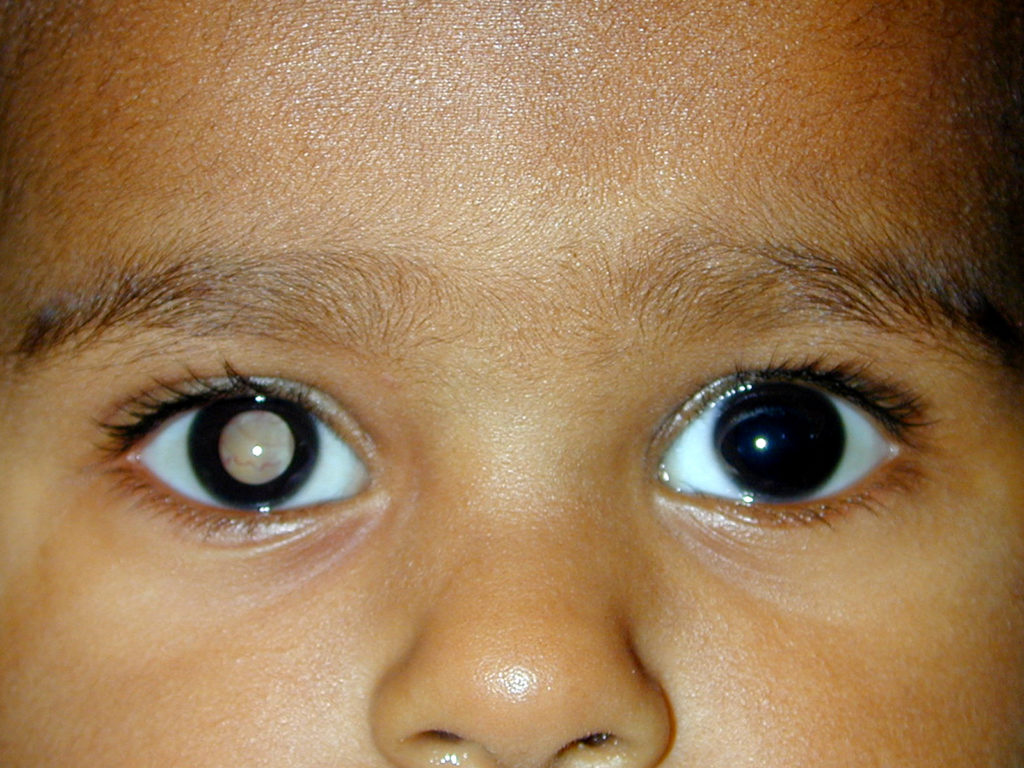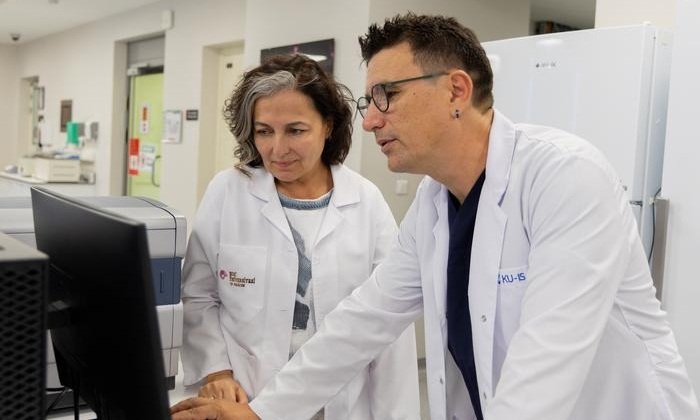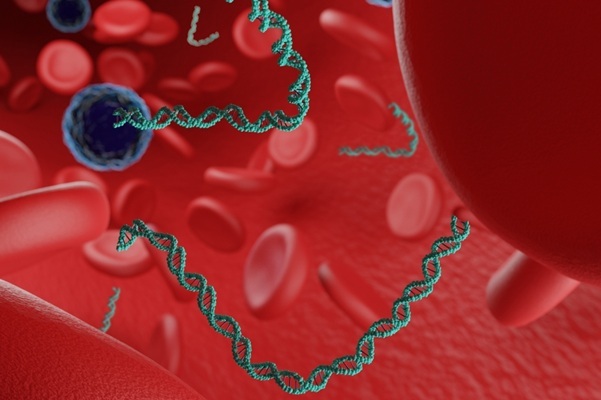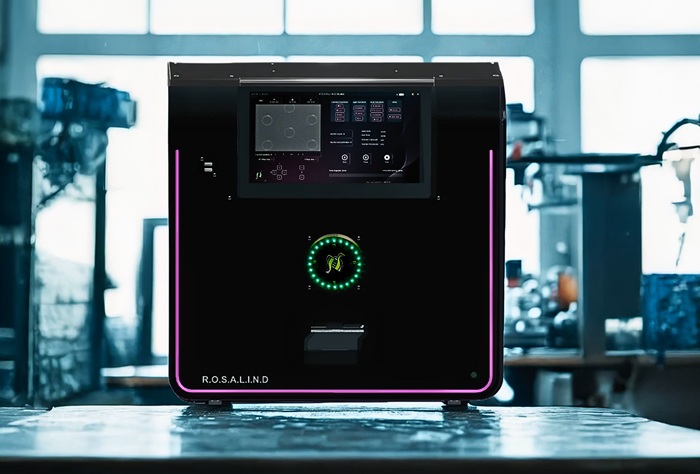Aqueous Humor Is Superior to Blood to Diagnose Retinoblastoma
|
By LabMedica International staff writers Posted on 25 Nov 2019 |

Image: Retinoblastoma is cancer of the eye and cannot be biopsied. Aqueous humor is superior to blood to diagnose retinoblastoma (Photo courtesy of Aravind Eye Hospital).
Retinoblastoma is a cancer that forms in the light-detecting cells in the back of the eye. It often appears in children under two years of age and can lead to blindness or eye removal. Most cancers are biopsied and studied so that medical scientists can design targeted treatments.
When there is a family history of retinoblastoma, a child is most likely to develop the disease within 28 months of birth. When there is no family history, it is frequently the parents who notice the main symptoms of retinoblastoma: a white pupil reflex instead of a normal black pupil or red reflex, or a crossed eye.
Ophthalmologists at the Children's Hospital Los Angeles (Los Angeles, CA, USA) and their associates performed whole genome sequencing on 20 matched blood and aqueous samples. Tumor-associated chromosomal changes were found in 0/20 blood versus 11/20 aqueous samples along with shorter DNA fragments. The scientists concluded that aqueous humor is superior to blood as a liquid biopsy for retinoblastoma.
Jesse L. Berry, MD, Associate Director of Ocular Oncology at Children's Hospital Los Angeles, and senior author of the study, said, “You can't directly biopsy retinoblastoma. The tumor is like liquid and has cells all over the eye. Plus retinoblastoma cells can spread easily. Direct biopsy can cause relapse or spread of the disease outside of the eye. This makes diagnosis tricky. In the absence of molecular tests, trained ophthalmologists must look for anomalies in the eye and use ultrasound imaging to diagnose the disease.”
Dr. Berry noted that “Many children actually have retinoblastoma tumors in both eyes. If we were to test the blood and find a positive result, we would not actually know which eye it was from. Instead, aqueous humor biopsies give us specific information for tumors in each eye. Not only can tumor DNA be detected, but the study also showed that genetic factors can predict treatment success for a given tumor. Taken together, the discoveries are set to drastically improve retinoblastoma research and clinical practice.”
"Aqueous humor biopsy has potential to becoming the new standard of care for retinoblastoma," said Dr. Berry. "It is our best chance to diagnose and treat these patients on a molecular level.” The study was published on October 30, 2019 in the journal Ophthalmology.
Related Links:
Children's Hospital Los Angeles
When there is a family history of retinoblastoma, a child is most likely to develop the disease within 28 months of birth. When there is no family history, it is frequently the parents who notice the main symptoms of retinoblastoma: a white pupil reflex instead of a normal black pupil or red reflex, or a crossed eye.
Ophthalmologists at the Children's Hospital Los Angeles (Los Angeles, CA, USA) and their associates performed whole genome sequencing on 20 matched blood and aqueous samples. Tumor-associated chromosomal changes were found in 0/20 blood versus 11/20 aqueous samples along with shorter DNA fragments. The scientists concluded that aqueous humor is superior to blood as a liquid biopsy for retinoblastoma.
Jesse L. Berry, MD, Associate Director of Ocular Oncology at Children's Hospital Los Angeles, and senior author of the study, said, “You can't directly biopsy retinoblastoma. The tumor is like liquid and has cells all over the eye. Plus retinoblastoma cells can spread easily. Direct biopsy can cause relapse or spread of the disease outside of the eye. This makes diagnosis tricky. In the absence of molecular tests, trained ophthalmologists must look for anomalies in the eye and use ultrasound imaging to diagnose the disease.”
Dr. Berry noted that “Many children actually have retinoblastoma tumors in both eyes. If we were to test the blood and find a positive result, we would not actually know which eye it was from. Instead, aqueous humor biopsies give us specific information for tumors in each eye. Not only can tumor DNA be detected, but the study also showed that genetic factors can predict treatment success for a given tumor. Taken together, the discoveries are set to drastically improve retinoblastoma research and clinical practice.”
"Aqueous humor biopsy has potential to becoming the new standard of care for retinoblastoma," said Dr. Berry. "It is our best chance to diagnose and treat these patients on a molecular level.” The study was published on October 30, 2019 in the journal Ophthalmology.
Related Links:
Children's Hospital Los Angeles
Latest Pathology News
- AI Tool Simultaneously Identifies Genetic Mutations and Disease Type
- Rapid Low-Cost Tests Can Prevent Child Deaths from Contaminated Medicinal Syrups
- Tumor Signals in Saliva and Blood Enable Non-Invasive Monitoring of Head and Neck Cancer
- Common Health Issues Can Influence New Blood Tests for Alzheimer’s Disease
- Blood Test Formula Identifies Chronic Liver Disease Patients with Higher Cancer Risk
- Tunable Cell-Sorting Device Holds Potential for Multiple Biomedical Applications
- AI Tool Outperforms Doctors in Spotting Blood Cell Abnormalities
- AI Tool Rapidly Analyzes Complex Cancer Images for Personalized Treatment
- Diagnostic Technology Performs Rapid Biofluid Analysis Using Single Droplet
- Novel Technology Tracks Hidden Cancer Cells Faster
- AI Tool Improves Breast Cancer Detection
- AI Tool Predicts Treatment Success in Rectal Cancer Patients
- Blood Test and Sputum Analysis Predict Acute COPD Exacerbation
- AI Tool to Transform Skin Cancer Detection with Near-Perfect Accuracy
- Unique Immune Signatures Distinguish Rare Autoimmune Condition from Multiple Sclerosis
- Simple Optical Microscopy Method Reveals Hidden Structures in Remarkable Detail
Channels
Clinical Chemistry
view channel
Noninvasive Blood-Glucose Monitoring to Replace Finger Pricks for Diabetics
People with diabetes often need to measure their blood glucose multiple times a day, most commonly through finger-prick blood tests or implanted sensors. These methods can be painful, inconvenient, and... Read more
POC Breath Diagnostic System to Detect Pneumonia-Causing Pathogens
Pseudomonas aeruginosa is a major cause of hospital-acquired and ventilator-associated pneumonia, particularly in lung transplant recipients and patients with structural lung disease. Its ability to form... Read moreMolecular Diagnostics
view channel
Endometriosis Blood Test Could Replace Invasive Laparoscopic Diagnosis
Endometriosis affects an estimated 1 in 10 women globally, yet diagnosis can take 7 to 10 years on average due to the invasive nature of laparoscopy and lack of accurate, non-invasive tests.... Read more
World's First NGS-Based Diagnostic Platform Fully Automates Sample-To-Result Process Within Single Device
Rapid point-of-need diagnostics are of critical need, especially in the areas of infectious disease and cancer testing and monitoring. Now, a direct-from-specimen platform that performs genomic analysis... Read more
Rapid Diagnostic Breakthrough Simultaneously Detects Resistance and Virulence in Klebsiella Pneumoniae
Antibiotic resistance is a steadily escalating threat to global healthcare, making common infections harder to treat and increasing the risk of severe complications. One of the most concerning pathogens... Read moreHematology
view channel
MRD Tests Could Predict Survival in Leukemia Patients
Acute myeloid leukemia is an aggressive blood cancer that disrupts normal blood cell production and often relapses even after intensive treatment. Clinicians currently lack early, reliable markers to predict... Read more
Platelet Activity Blood Test in Middle Age Could Identify Early Alzheimer’s Risk
Early detection of Alzheimer’s disease remains one of the biggest unmet needs in neurology, particularly because the biological changes underlying the disorder begin decades before memory symptoms appear.... Read more
Microvesicles Measurement Could Detect Vascular Injury in Sickle Cell Disease Patients
Assessing disease severity in sickle cell disease (SCD) remains challenging, especially when trying to predict hemolysis, vascular injury, and risk of complications such as vaso-occlusive crises.... Read more
ADLM’s New Coagulation Testing Guidance to Improve Care for Patients on Blood Thinners
Direct oral anticoagulants (DOACs) are one of the most common types of blood thinners. Patients take them to prevent a host of complications that could arise from blood clotting, including stroke, deep... Read moreImmunology
view channel
Ultrasensitive Liquid Biopsy Demonstrates Efficacy in Predicting Immunotherapy Response
Immunotherapy has transformed cancer treatment, but only a small proportion of patients experience lasting benefit, with response rates often remaining between 10% and 20%. Clinicians currently lack reliable... Read more
Blood Test Could Identify Colon Cancer Patients to Benefit from NSAIDs
Colon cancer remains a major cause of cancer-related illness, with many patients facing relapse even after surgery and chemotherapy. Up to 40% of people with stage III disease experience recurrence, highlighting... Read moreMicrobiology
view channel
New UTI Diagnosis Method Delivers Antibiotic Resistance Results 24 Hours Earlier
Urinary tract infections affect around 152 million people every year, making them one of the most common bacterial infections worldwide. In routine medical practice, diagnosis often relies on rapid urine... Read more
Breakthroughs in Microbial Analysis to Enhance Disease Prediction
Microorganisms shape human health, ecosystems, and the planet’s climate, yet identifying them and understanding how they are related remains a major scientific challenge. Even with modern DNA sequencing,... Read moreTechnology
view channel
AI Predicts Colorectal Cancer Survival Using Clinical and Molecular Features
Colorectal cancer is one of the most common and deadly cancers worldwide, and accurately predicting patient survival remains a major clinical challenge. Traditional prognostic tools often rely on either... Read more
Diagnostic Chip Monitors Chemotherapy Effectiveness for Brain Cancer
Glioblastoma is one of the most aggressive and fatal brain cancers, with most patients surviving less than two years after diagnosis. Treatment is particularly challenging because the tumor infiltrates... Read moreIndustry
view channel
BD and Penn Institute Collaborate to Advance Immunotherapy through Flow Cytometry
BD (Becton, Dickinson and Company, Franklin Lakes, NJ, USA) has entered into a strategic collaboration with the Institute for Immunology and Immune Health (I3H, Philadelphia, PA, USA) at the University... Read more




















